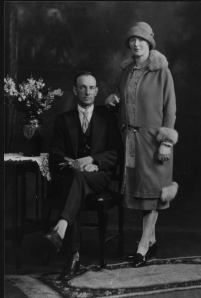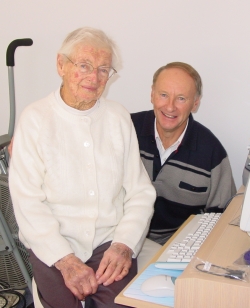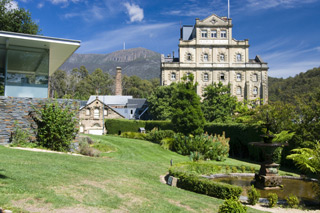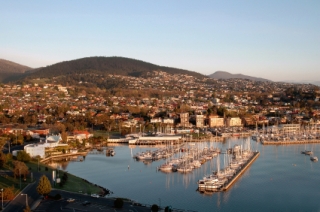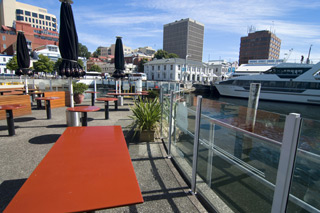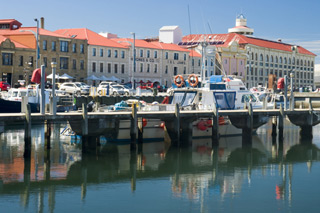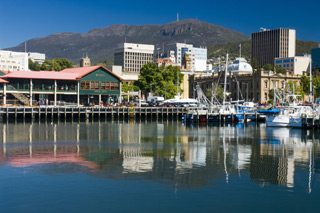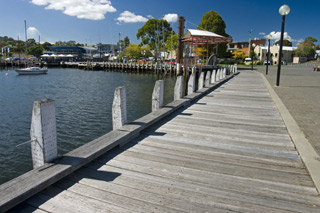History
The land under development has been in the ownership of the Stevens family since 1930, and has a long and colourful history, forming an important part of the early years of Hobart town.
The Derwent Dairy (1930 – 1955)
Purchased by Sydney Stevens in 1930; the 30 acres at the top of Forest Road, West Hobart, was originally a Dairy farm, which supplied many residents of South and West Hobart with their daily milk.
Sydney married Thelma Lyell Palmer, a descendant of the famous composer, John Woodcock Graves). Syd and Thelma worked hard on the “Derwent Dairy” with their four children, Pat, Geoff, John and Graeme.
During these years, access to the property (by horse and cart) was primarily through Tara Street, South Hobart, on the Western front of the property.
In later years, a driveway was constructed off Forest Road, West Hobart, and this became the main access, although Liverpool Crescent also provided road access to part of the land.
The Derwent Hatchery (1955 – 1995)
In the mid 1950’s, feeling that dairy farming was a very time consuming and difficult way to make a living, Syd converted the farm to a Poultry business, the “Derwent Hatchery” – somewhat mistakenly believing that poultry would be easier to manage than cattle.
The main business was hatching chickens for sale to other farmers as laying stock. However, until 1995 the farm also used to sell eggs, manure and dressed boiling chickens to the public.
In 1963, Graeme Stevens, the youngest son, took over the management of the farm from his elderly father. From this time on Graeme dedicated his life to the farm and, eventually, to the development of the land. Graeme and wife Sue brought up three children on the farm – Leanne, Michael and Carolyn.
The farm was still primarily poultry, but there were also some cattle to keep the grass down; the occasional sheep, and a few cats. As a hobby, Graeme also built two steel yachts on the property, and Leanne used the paddocks for her horses, which she rode every day around the Knocklofty Reserve.
The farm was a busy place, being run primarily by Graeme and his elderly mother Thelma, but also with the help of Sue and other casual workers. Visitors were frequent – people came up to purchase their eggs direct from the farm; and many people also bought laying pullets for their backyard henhouses.
Every day Graeme and Thelma would be tending to hatchling chickens; cleaning out sheds, collecting eggs, bagging manure, or transporting chickens to various other hatcheries. Thelma also maintaned a very large garden in which she grew vegetables for the extended family. Coupled with a ready supply of eggs and chickens, it was a healthy and cost effective way for the family to live.
Reversion to Residential Use
When Graeme made application to the Hobart City Council for approval to upgrade the farm and construct some large poultry sheds in the early 1970’s, approval was granted on the condition that after 15 years, the land would revert to its zoned use of “Residential”.
The Council was concerned that poultry farming was a “noxious trade” which was being carried out close to residential areas – the land was only 2.3 kilometres from the Hobart GPO, and was surrounded on the north, east and western sides by residential dwellings; and was itself zoned “Residential”.
Imagine Graeme’s surprise then, when in 1982 the Hobart City Council unexpectedly issued a new City of Hobart Planning Scheme; in which the Hatchery land had been re-zoned back to “Rural”.
It was impossible to keep the farm operating indefinitely, as it was too close to other residents; yet the land was now unable to be subdivided into housing blocks!! When Graeme discovered this, it took several years to overturn the re-zoning and eventually required Supreme Court action.
Eventually, the land was re-zoned “Residential” through the N-Amendments to the City of Hobart Planning Scheme, and a new precinct (24A) was created.
Once the rezoning occurred, Graeme commenced the process of applying for permission to subdivide the land. The poultry farm operations wound up in 1995, however after that time it took many years and much hard work to achieve final approval for the Development of the land into housing blocks.
A section of the property facing Forest Road was developed in 2008, and this resulted in a number of blocks being sold, and several new houses being constructed.
When the Forest Road section of the land was subdivided, a new road was created and named “Thelma Drive” in memory of the late Thelma Stevens, matriarch of the Stevens family, who worked tirelessly on the farm until she was 97. Thelma enjoyed a long and healthy life, and died in 2004 aged 101.
Graeme then lodged an application to the Hobart City Council to subdivide the balance of the farm land. Final approval was received in December 2010.
Tragically, Graeme became seriously ill in September 2010, and passed away on Australia Day 2011, aged 68. Sadly, his death came just a week before civil works commenced, so he never saw the end result of his hard work.
The subdivision is being continued by Graeme’s family, in his honour.
